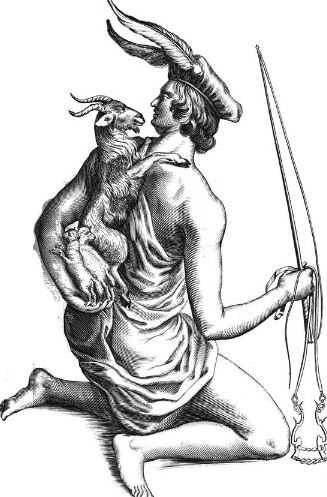Amaltheia, a name steeped in ancient mythology, holds a significant place in Greek lore. Known as the nurturing figure who cared for the infant Zeus, Amaltheia’s story is one of compassion, protection, and divine favor. This article will explore the legend of Amaltheia, her role in Greek mythology, and her lasting impact on culture and astronomy.
The Myth of Amaltheia
In Greek mythology, Amaltheia is often depicted as a nurturing figure, most commonly represented as a goat or a nymph. The myth centers around the early life of Zeus, the king of the gods, who was hidden from his father, Cronus, to avoid being swallowed like his siblings. Cronus had been swallowing his children to prevent a prophecy that one of them would overthrow him.
To protect Zeus, his mother, Rhea, hid him in a cave on the island of Crete. It was there that Amaltheia took on the role of caregiver. In some versions of the myth, Amaltheia is a divine goat who nursed the infant Zeus with her milk. In other versions, she is a nymph who fed Zeus using the milk of a goat. Regardless of her form, Amaltheia’s care was vital to the survival of the future ruler of Mount Olympus.
The Horn of Plenty
One of the most enduring symbols associated with Amaltheia is the Cornucopia, or the Horn of Plenty. According to the myth, one of Amaltheia’s horns was broken off and transformed by Zeus into a magical object that could provide an endless supply of food and drink. This horn, known as the Cornucopia, became a symbol of abundance and nourishment.
The Cornucopia is often depicted in art and literature as a horn overflowing with fruits, grains, and flowers. It symbolizes prosperity and the idea that those who are generous, like Amaltheia, will be rewarded with endless blessings. The Cornucopia’s association with Amaltheia underscores her role as a provider and nurturer.
Amaltheia in Astronomy
Amaltheia’s influence extends beyond mythology and into the realm of astronomy. In 1892, the American astronomer Edward Emerson Barnard discovered a small moon orbiting Jupiter, which he named Amalthea after the mythical goat. Amalthea is one of Jupiter’s inner moons, and it plays a crucial role in the dynamics of Jupiter’s ring system.
The naming of this moon after Amaltheia is a tribute to her nurturing role in mythology. Just as the mythological Amaltheia nurtured Zeus, the moon Amalthea contributes to the environment of Jupiter, one of the most powerful planets in our solar system. This connection between myth and science highlights the enduring legacy of Amaltheia’s story.

Amaltheia in Art and Culture
Amaltheia’s story has inspired countless works of art, literature, and cultural references throughout history. Her nurturing nature and the symbol of the Cornucopia have been depicted in various forms, from ancient sculptures to modern paintings. Artists have often used the image of Amaltheia to represent themes of abundance, generosity, and the importance of care.
In addition to visual art, Amaltheia’s story has been referenced in literature and popular culture. Her name is sometimes used to evoke themes of nurturing and protection, and the Cornucopia remains a popular symbol of harvest festivals and celebrations of abundance.
The Legacy of Amaltheia
Amaltheia’s legacy is one of kindness, protection, and the idea that even the smallest acts of care can have a profound impact. By nurturing Zeus, Amaltheia played a crucial role in the survival of the god who would go on to become the ruler of the cosmos. Her story reminds us of the power of compassion and the importance of caring for others.
The Cornucopia, as a symbol of abundance, continues to be a reminder of the rewards of generosity. Whether in mythology, astronomy, or art, Amaltheia’s influence is far-reaching, touching on themes that are as relevant today as they were in ancient times.
Amaltheia, the nurturing figure from Greek mythology, represents the timeless values of care, generosity, and protection. Her story, from nursing the infant Zeus to the creation of the Cornucopia, has left an indelible mark on culture and history. Whether as a symbol in art or as the namesake of a moon orbiting Jupiter, Amaltheia’s legacy endures, reminding us of the importance of compassion and the lasting impact of nurturing those around us.
Understanding the myth of Amaltheia offers us insight into ancient beliefs and the ways in which these stories continue to shape our world. Whether you’re exploring Greek mythology for the first time or revisiting familiar tales, the story of Amaltheia provides a powerful example of the enduring influence of myth on human culture.
